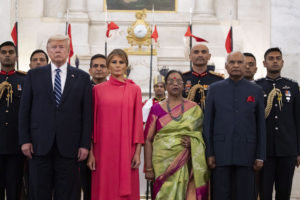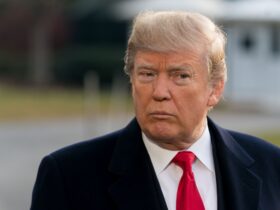STRATEGIC EYE: A column on current Indian, national and global issues
New Delhi Will Have To Tweak Policies On China, Afghanistan And Indo-Pacific To Safeguard Interests
By Rajkumar Sharma@
It was a strategic visit of US President Donald Trump to India as the two sides concluded defence deals worth $3 billion including Apache and MH-60 Romeo helicopters.
President Trump and PM Modi are two leaders who connect with the masses due to their populist views. Both love massive crowds and have developed personal chemistry that works to their advantage.
By visiting India before the US presidential election, Trump hopes to decisively win over the influential and wealthy Indian diaspora in the US which could boost the chances of Trump 2.0. On the other hand, PM Modi received compliments from the US President on India’s cultural diversity and he also refused to comment on the much-debated Citizenship Amendment Act (CAA) in India.
In a country like India with a history of anti-US sentiment, good rapport between the leaders has been instrumental in giving the desired momentum to India-US ties. Today, the relationship has reached a stage where it is equally backed by a strong public opinion and people to people contacts on both sides.

Growing proximity between the two countries has culminated in elevation of ties to the level of Comprehensive Global Strategic Partnership. Somebody as transactional, as Trump visited India with family even though the trade deal was off the table is a victory for Indian diplomacy.
It was a strategic visit as the two sides concluded defence deals worth $3 billion including Apache and MH-60 Romeo helicopters. Sale of advanced military hardware from the US to India has been instrumental in building India’s maritime capabilities against an assertive China in the Indo-Pacific region.
Under PM Modi, India has been successful in flying below Trump’s radar to avoid being frequently targeted on trade issues while at the same time; there has been a vast improvement in strategic relations. Examples include the signing of two foundational agreements (LEMOA, COMCASA), the start of 2+2 dialogue, renaming of Pacific Command as Indo-Pacific Command, the revival of Quad, first tri-service exercise and extending STA-1 status to India.
As far as, India’s relations with Pakistan, China and regional security are concerned, there are some takeaways under Trump.
As far as, Pakistan is concerned, Trump, like Obama, has been de-hyphenating India-Pakistan relations. He did not travel to Pakistan before coming to India, as was the case earlier with American presidents coming to India. He has also been closely working with Pakistan to dismantle its terror infrastructure and has been upgrading counter-terrorism cooperation with India.
Pressure has been maintained on Pakistan through FATF as well. During the visit, Trump mentioned that PM Modi will take care of terrorism and he is a bold man. After the Pulwama attack, Trump justified India’s right to self-defence and in a way, made it easy for India to carry surgical strikes against Pakistan.
This, barring a major hiccup, is likely to continue if he returns for the second term. However, for India, the main challenge would come from Afghanistan, where Trump is soon likely to announce a deal with Taliban.
India has invested massively in Afghanistan and has serious security interests in the political stability of Afghanistan. Trump has been supportive of India’s increased security profile in Afghanistan in past and India will have to look for a new security policy in Afghanistan.
There are many options for India to choose between having boots on the ground and staying reactive in Afghanistan. India needs to be ready to do some heavy lifting in regional security. The vacuum created by America’s disinterest and decreasing security presence should not be filled by China in concert with Pakistan.
On China, Trump’s policy has been accused of being ad-hoc and confused. As far as, India is concerned, Trump has pushed ahead the idea of Indo-Pacific and resvived the Quad. India is also playing its cards well and has agreed to upgrade Quad to level of foreign ministers.
America did not show any public solidarity with India during the 2017 Doklam standoff which raises doubts about Trump’s lack of long-term strategy towards checking China’s hegemonic ambitions in Asia.
There is scope for India to work with the US, Japan and Australia under the Blue Dot Network to develop high quality infrastructure in order to balance China’s BRI. Russia is not in a position to prevail upon China to make concessions towards India’s strategic concerns.
On the other hand, the US has the required diplomatic muscles to do that. China had to finally agree for designation of Masood Azhar as a global terrorist by the UNSC and the US played an important part in this saga. However, the US has to understand that China poses dual threat to India, on the land borders and at the sea.
The US has been helping India in building its maritime capabilities but its actions thwart India’s attempts to balance China in Eurasia. In the Indo-Pacific, India needs to be careful not to totally depend on big players and should strengthen security links with middle powers like Indonesia.
There will be irritants in the relationship like trade and India’s relations with Iran, Russia etc. The two countries have almost ten active disputes at the WTO.
They, however, share a strategic convergence to balance China and so far, trade issues have not been able to spoil this understanding.
For India, a good trade deal with the US could kill many birds with one arrow and may possibly give India suitable space to conduct relations with Iran and Russia in the near future.
If he comes back to power, Trump 2.0 could be a trade nightmare for India. New Delhi would need to sort out these issues; else China would have the last laugh.
@ Rajkumar Sharma, Ph.D. Faculty of Political Science, Indira Gandhi Open University, (IGNOU) New Delhi













Leave a Reply